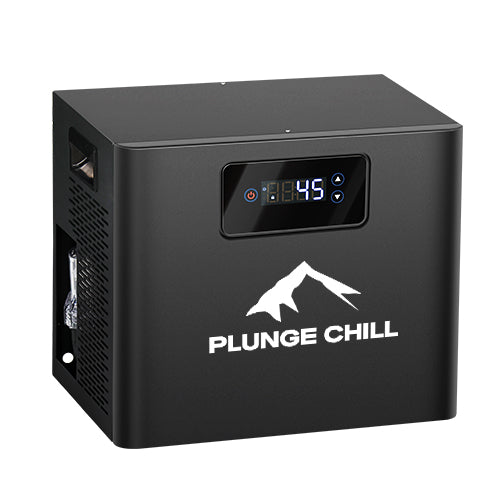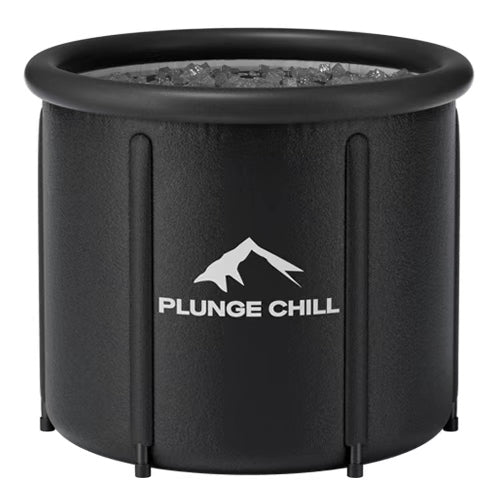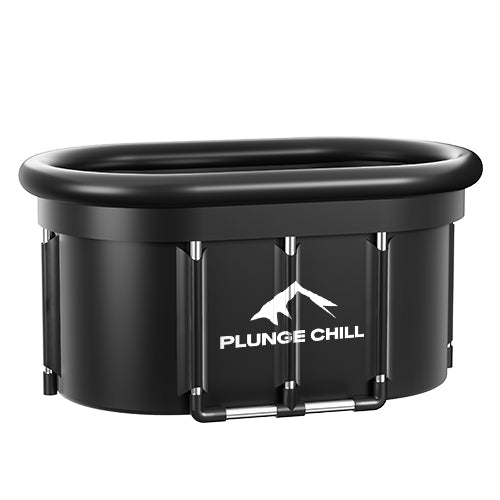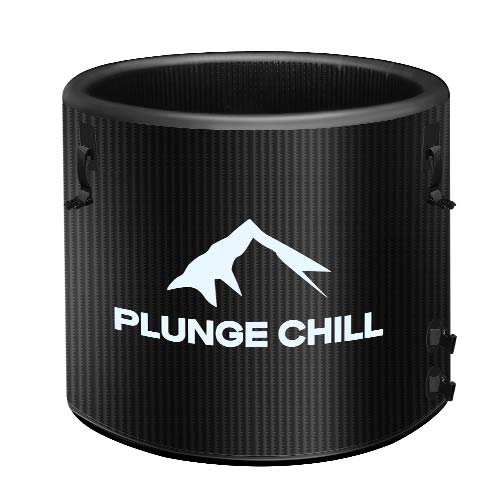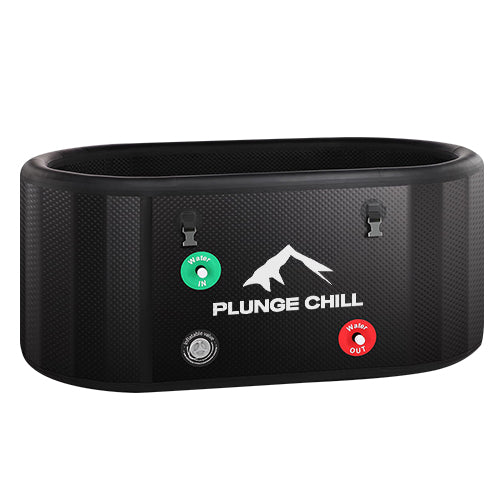Cold plunges and chess look like opposites—one is visceral and physical, the other cerebral and quiet. In practice, the disciplines reinforce each other. As a sports rehabilitation specialist and strength coach who also reviews cold plunge products, I have seen how brief, well‑dosed cold exposure can sharpen alertness and emotional control, while poor dosing or timing can sap decision quality. The research echoes that real‑world experience. Short, moderate cold exposure can elevate positive affect and attentional energy, whereas long or severe bouts reliably impair working memory and executive function. This article outlines how to use cold therapy strategically to train the same mental qualities that win complex endgames: calm under pressure, clear heuristics, and disciplined pacing. It also covers the evidence, the cautions, and how to choose and care for a cold plunge if you decide to bring one into your training environment.
What Cold Does to the Brain and Body
Cold water immersion, cold showers, and whole‑body cryotherapy are deliberate, brief exposures to low temperatures designed to elicit adaptive stress responses. Stanford Lifestyle Medicine describes cold water immersion as short exposures around 50–60°F and notes that dry cryotherapy elicits similar physiology by different means. The Journal of Neuropsychiatry and Clinical Neurosciences frames the response within neurohormesis: a biphasic stress model where low‑dose challenges can prime protective pathways while excessive stress impairs function. Mechanistically, skin thermoreceptors signal through cold‑sensitive TRP channels such as TRPM8; downstream autonomic and endocrine cascades release catecholamines and other neurochemicals implicated in arousal, mood, and pain modulation.
On the positive side of the ledger, several sources converge on acute increases in alertness and mood. An fMRI study of head‑out immersion around 68°F reported higher positive affect and more integrated connectivity among large‑scale brain networks after a single five‑minute session, suggesting that a modest, tolerable cold dose can transiently optimize the brain’s “task control” hubs. Embr Labs highlights sympathetic activation and norepinephrine as a plausible route to sharpened attention. IGLU Therapy and other summaries describe immediate boosts in mental clarity after cold exposure, with repeated practice potentially strengthening stress‑response systems.
The caveats matter just as much. A systematic review in healthy adults found that acute cold generally impairs working memory, attention, and executive function when the exposure is longer or colder, with slowed processing on tasks like the Stroop and reduced vigilance. Those decrements can persist into the early recovery window even after leaving the cold, which is exactly when some people try to take on complex tasks. Mayo Clinic Press characterizes overall evidence as mixed and often weak and reminds athletes that frequent cold immediately after training can blunt some adaptation signals, especially for strength and hypertrophy. Claims about brown fat recruitment and large metabolic shifts exist in commercial materials; reputable reviews note that human benefits are possible but unproven at scale and are modest relative to exercise.
As with most training stressors, dose and context determine direction. Short, moderate, and well‑timed exposures can energize the chess mind; severe or prolonged cold at the wrong time can degrade calculation and increase blunders.
Cold Stress and Cognition: A Clear‑Eyed Look
Cognitive performance under cold follows a predictable pattern. When cold sufficiently lowers skin and core temperatures, working memory, attention, cognitive flexibility, and reaction speed tend to degrade. That pattern appears across water immersion studies at approximately 50–57°F and in extreme ambient cold, and the effects can last into recovery for at least the first hour. The magnitude of impairment varies with water or air temperature, immersion duration, body size, clothing, and acclimation status. Protective gear or protocols that limit core cooling preserve performance better than exposures that drive deeper thermal strain.
Short, tolerable exposures paint a different picture. Head‑out immersions around 68°F for a few minutes can increase positive affect and perceived energy. Face immersion alone taps the mammalian diving reflex via trigeminal and vagal pathways and can shift autonomic tone toward a calmer state. Stanford Lifestyle Medicine describes this contrast between whole‑body sympathetic activation and facially driven parasympathetic responses, and it is directly useful for chess where composure often decides the game.
Repeated exposures change the system. Both laboratory and field reports suggest partial habituation: individuals show smaller stress hormone responses over time, and some cognitive measures improve across repeated sessions. That does not erase the fundamental dose–response curve, but it does widen the window where useful arousal can be summoned without the downside of cognitive slowdown.
The practical implication is simple. If the goal is sharper thinking, keep the cold dose on the stimulating side of the hormetic curve, protect core temperature, and deliberately schedule your hardest cognitive work after a short rewarm period, not during the shiver.
Translating Physiology to the Board: Strategic Thinking Under Stress
Chess rewards players who can toggle between global strategy and precise calculation, hold competing lines in working memory, and regulate arousal during swings on the clock. Cold exposure, practiced thoughtfully, becomes a training partner for those capacities.
The first bridge is arousal control. Cold can spike noradrenergic tone, bumping up alertness for a short window. That is helpful if you pair a very brief, moderate immersion with calm breathing and then enter a structured opening drill or tactics block. The second bridge is top‑down control under discomfort. Maintaining steady nasal inhales and longer, controlled exhales during the urge to exit the cold is a practical rehearsal for resisting panic after a blunder or when evaluating a sharp sacrifice. The Psychiatry & Psychotherapy Podcast underscores a broader point: expectancy effects are real. If you believe the routine steadies you, the benefits can be amplified. That is not a reason to ignore the science; it is a reason to build a consistent ritual you trust.
The third bridge is timing. The systematic review showing impairments during and immediately after longer cold exposures suggests a simple chess rule: do not calculate hard lines while shivering. Keep any pre‑session immersion short and moderate, rewarm for several minutes, and then sit down to think. On rest days or away from the board, you can explore slightly colder or longer exposures to build general resilience, as long as you respect the training interference cautions for strength and hypertrophy.

A Practical Cold‑to‑Chess Routine
For club players and professionals alike, a minimal, evidence‑informed routine is usually better than an aggressive one. Begin with a normal warm shower and finish cold for 30 to 60 seconds. The aim is to breathe slowly, keep shoulders down, and exit feeling alert rather than shocked. On non‑competing days, consider one short head‑out immersion in water that feels uncomfortably cold but safe, often around 50 to 60°F for one to three minutes. Step in gradually to blunt the initial gasp reflex. Exit before shivering becomes intense, put on warm layers, walk around, and give yourself ten minutes of light rewarming. Then open your notebook and work through a tactics set or a planned middlegame theme. Many athletes find that a total of about eleven minutes per week split across two to four sessions strikes a workable balance between stimulus and recovery, and a morning schedule tends to support energy without disturbing sleep.
On tournament days, skip a full plunge and use a chilled face immersion or cool water on the cheeks and forearms to leverage the diving reflex and reset between rounds. Pair that with simple breathwork such as equal counts on inhale, hold, and exhale to nudge the nervous system toward balance. If nerves remain high, extend the exhale relative to the inhale for a few cycles.
Avoid pairing deep cold with important strength sessions if muscle growth is a priority. Frequent cold immediately after lifting can blunt some adaptation; leaving a gap of several hours or moving cold to a different time of day reduces the risk. When in doubt, consult your medical professional, especially if you have cardiovascular disease, Raynaud’s, respiratory conditions, pregnancy, neuropathy, or other medical concerns noted by Mayo Clinic Press and Stanford Lifestyle Medicine.
Protocols and Safety, In Plain English
The safest on‑ramp is a cold finish to your normal shower, repeated consistently several days each week. Extend the duration gradually across weeks as your tolerance grows. For water immersions, choose a temperature that feels uncomfortably cold yet safe, often near the low 50s°F for healthy, acclimating adults, and limit early sessions to a couple of minutes. Enter slowly rather than jumping, keep your head above water, and keep breathing under control. Never hyperventilate before or during immersion, and never practice alone, especially in natural waters. If you feel chest pain, dizziness, or disorientation, get out and warm up promptly.
Schedule matters. If you plan a heavy calculation session or a critical match, avoid long or very cold immersions immediately beforehand. If you love to plunge at night, notice whether it disrupts your sleep and adjust earlier. If you lift or sprint for adaptation, do the plunge before that training or many hours later, not immediately after. For those who want mood support rather than the full‑body challenge, use facial immersion or cool compresses on the cheeks as a calming microdose between rounds.
Across all approaches, remember the evidence base is still developing. Stanford Lifestyle Medicine reports mood improvements, early signs of improved stress resilience, and plausible neuroprotective mechanisms from animal work. Mayo Clinic Press points out small human samples, mixed findings, and a risk profile that rises with colder and longer exposures. The Journal of Neuropsychiatry and Clinical Neurosciences highlights neurohormesis as a helpful lens but emphasizes individualized dosing and the need for more clinical trials. That consensus supports cautious experimentation, consistent practice, and respect for your own response.
Choosing the Right Modality and Caring for It
Before investing in a dedicated plunge, test the habit with cold shower finishes or ice in a standard tub. If you enjoy the practice and want precise control, a purpose‑built plunge can pay for itself in time saved, consistency, and water management. My evaluation criteria as a reviewer are practical and simple. A reliable temperature readout and control make dosing predictable. A lid and insulation reduce heat gain and debris. Filtration and straightforward sanitation keep water clear without constant draining. A drain that empties cleanly, a surface that is easy to wipe down, and fittings that resist corrosion cut maintenance time. A footprint that fits your space, noise that does not dominate a garage or apartment, and power that matches your outlet realities determine day‑to‑day usability more than any marketing spec.
Care is mostly about hygiene and verification. Rinse off before entering, keep the tub covered when not in use, and follow the manufacturer’s sanitation plan. Clean or replace filters on schedule and wipe surfaces to prevent biofilm. Verify temperature with a separate thermometer when you first set up the unit and after any changes. Drain and refresh water at reasonable intervals based on use, filtration, and sanitation method. In cold climates, protect plumbing from freezing and follow winterizing instructions if you plan downtime. With these habits, a plunge becomes a low‑friction, high‑compliance tool rather than a chore.

Modalities at a Glance
Modality |
Typical temperature |
Typical session |
Primary upside |
Key cautions |
Evidence signal |
Cold shower finish |
Cool to cold, adjustable |
30–120 seconds |
Accessible and easy to dose at home |
Initial gasp, less precise than a tub |
Reported alertness and mood boosts in small studies noted by Mayo Clinic Press |
Ice in standard tub |
About 50–59°F |
2–5 minutes |
Robust full‑body stimulus with low cost |
Cold shock and hypothermia risk if overdone |
Mixed cognitive effects; protocols from Stanford Lifestyle Medicine emphasize gradual progression |
Plumbed plunge with chiller |
Set near 50–60°F or as tolerated |
1–5 minutes |
Precise, repeatable dosing and easier maintenance |
Requires sanitation and routine care |
Physiology generalizes from cold‑water immersion literature |
Whole‑body cryotherapy |
Around −166°F air for 2–3 minutes |
2–3 minutes |
No wet setup, rapid sessions |
Cost, protocol variability, and screening needs |
Used in a 12‑week program that showed reduced cortisol responses over time in the Stanford Lifestyle Medicine summary; broader evidence remains limited |
All temperatures and durations are typical ranges drawn from Stanford Lifestyle Medicine and Mayo Clinic Press; individual tolerance and goals should govern final choices.
Pros, Cons, and Trade‑Offs
The upside of cold therapy for a chess player is straightforward. Brief, controlled doses can heighten alertness, lift mood, and provide a dependable ritual to center attention before study or competition. On days you need to reset between rounds, facial immersion offers a quiet way to slow the heart and sharpen focus without changing core temperature. Over weeks, consistent practice builds confidence in your ability to steady yourself when the position gets sharp.
The downside is equally clear. Longer or harsher exposures can cloud working memory and slow processing when you need them most. If you place cold immediately after strength training, you may dampen the very signals that drive adaptation. If you chase metabolic benefits, recognize that adult brown fat stores are limited and that any extra energy expenditure is small compared with training and nutrition. In short, treat cold as a tool for arousal control, mood, and resilience, not as a cure‑all.
A Buying Decision Framework for Players and Coaches
If you coach a scholastic team or travel often, a cold shower finish and a clean bowl with ice water for facial immersion may cover most needs at nearly zero cost. If you run a training center where athletes cycle through, a dedicated plunge with reliable temperature control and simple filtration becomes a time‑saver that promotes consistent dosing and hygiene. For individual competitors working from home, an insulated tub with a lid and a straightforward sanitizing approach balances price and practicality. In every case, the best unit is the one your environment supports and you will reliably use.
Maintenance and Hygiene, Simplified
Cold plunges stay pleasant when you build small habits. Encourage a quick soap‑and‑rinse before sessions. Keep the lid on whenever the tub is idle to limit debris and heat gain. Follow the manufacturer’s instructions for sanitation, filter care, and cleaning, and set reminders rather than relying on memory. Confirm temperature occasionally with a separate thermometer, especially after power or environmental changes. If the water ever smells off or looks cloudy, prioritize a drain and reset rather than trying to salvage it with extra chemicals. These small steps go further than any accessory in keeping the practice consistent and safe.
Measuring What Matters for Chess
You do not need a laboratory to tell whether cold is helping your game. Use a simple, repeatable routine. Record how alert and calm you feel ten minutes after each immersion and during your first tactics set. Note puzzle accuracy and time to solution across weeks. On match days, track whether a face‑cooling reset lowers jitters without dulling your edge. If a protocol consistently leaves you too wired or too chilled to think clearly, adjust temperature, duration, or timing. Your aim is repeatable clarity, not maximal discomfort.
Takeaway
Cold exposure is not a magic opening repertoire, but when used with judgment it is a reliable way to train the same mental muscles that decide tough games: arousal control, composure, and disciplined focus. The strongest evidence supports brief, moderate doses that raise positive affect and alertness without dragging core temperature down, paired with rewarming before hard cognition. Severe or prolonged cold predictably impairs calculation and should be kept away from tournament decisions. Choose an approach you can sustain, care for the equipment you have, and let the data you collect on your own focus and accuracy guide the dials. That is how a cold plunge becomes a strategic asset rather than a distraction.
FAQ
Is there solid evidence that cold exposure improves thinking in chess?
There is good evidence that short, tolerable exposures can elevate positive mood and perceived energy and that severe or prolonged cold impairs working memory and executive function. An fMRI study at roughly 68°F showed increases in positive affect and integrative brain‑network activity, while a systematic review found that colder and longer exposures slow processing and reduce vigilance. The chess‑specific link is a performance application: using a modest arousal bump and better emotion regulation to support thinking, then avoiding doses that push you into cognitive slowdown.
How cold should the water be if I want mental benefits without feeling groggy?
For most healthy adults, water that feels uncomfortably cold yet safe often falls around 50–60°F. Head‑out immersion for a couple of minutes, followed by ten minutes of light rewarming, tends to provide alertness without after‑drop. If you are new, start with a 30‑ to 60‑second cold shower finish and increase duration gradually over weeks. Stanford Lifestyle Medicine and Mayo Clinic Press emphasize gradual progression and paying attention to your own response.
When should I schedule cold around training so I do not blunt strength gains?
If muscle growth is a priority, avoid cold immersion right after strength training. Place cold earlier in the day, several hours before lifting, or leave a long gap afterward. This aligns with cautions from Mayo Clinic Press and discussions summarized by the Psychiatry & Psychotherapy Podcast that frequent post‑lifting cold can blunt hypertrophy signals. For chess study or tournament play, keep cold exposures brief and allow time to rewarm before sitting down to calculate.
I am anxious before rounds. Can cold help without a full plunge?
Yes. Facial immersion or applying cool water to the cheeks and forearms can activate parasympathetic pathways and settle breathing without cooling your core. Pair that with steady inhales and longer exhales to nudge your system toward calm. This approach leverages the diving reflex described by Stanford Lifestyle Medicine and fits in a restroom or a hotel room between rounds.
Are claims about fat burning and metabolism from cold plunges reliable?
Cold can activate thermogenic tissues and modestly increase energy expenditure, and commercial sources often highlight brown fat recruitment. Reputable summaries caution that human metabolic benefits are variable and generally small relative to exercise and nutrition. If you pursue cold for metabolic reasons, do so with realistic expectations and prioritize it for mood, arousal control, and resilience where the daily benefits are clearer.
Who should avoid cold plunges or get medical clearance first?
Anyone with cardiovascular or respiratory disease, Raynaud’s, pregnancy, peripheral neuropathy, or other significant medical conditions should speak with a clinician before starting. That guidance is consistent across Mayo Clinic Press and Stanford Lifestyle Medicine. Even if you are healthy, avoid hyperventilation practices before immersion, do not train alone in cold water, and stop immediately if you feel chest pain, dizziness, or unusual numbness.
References
- https://lifestylemedicine.stanford.edu/jumping-into-the-ice-bath-trend-mental-health-benefits-of-cold-water-immersion/
- https://pmc.ncbi.nlm.nih.gov/articles/PMC11872954/
- https://mcpress.mayoclinic.org/healthy-aging/the-science-behind-ice-baths-for-recovery/
- https://ufhealthjax.org/stories/2024/the-benefits-of-cold-water-immersion-therapy
- https://psychiatryonline.org/doi/full/10.1176/appi.neuropsych.20240053
- https://www.frontiersin.org/journals/physiology/articles/10.3389/fphys.2015.00372/full
- https://www.verywellmind.com/ice-bath-benefits-for-mental-health-8572533
- https://www.calm.com/blog/ice-bath-benefits
- https://footprintstorecoverymh.com/chilling-out-the-benefits-of-ice-baths-for-mental-health/
- https://www.hubermanlab.com/newsletter/the-science-and-use-of-cold-exposure-for-health-and-performance
